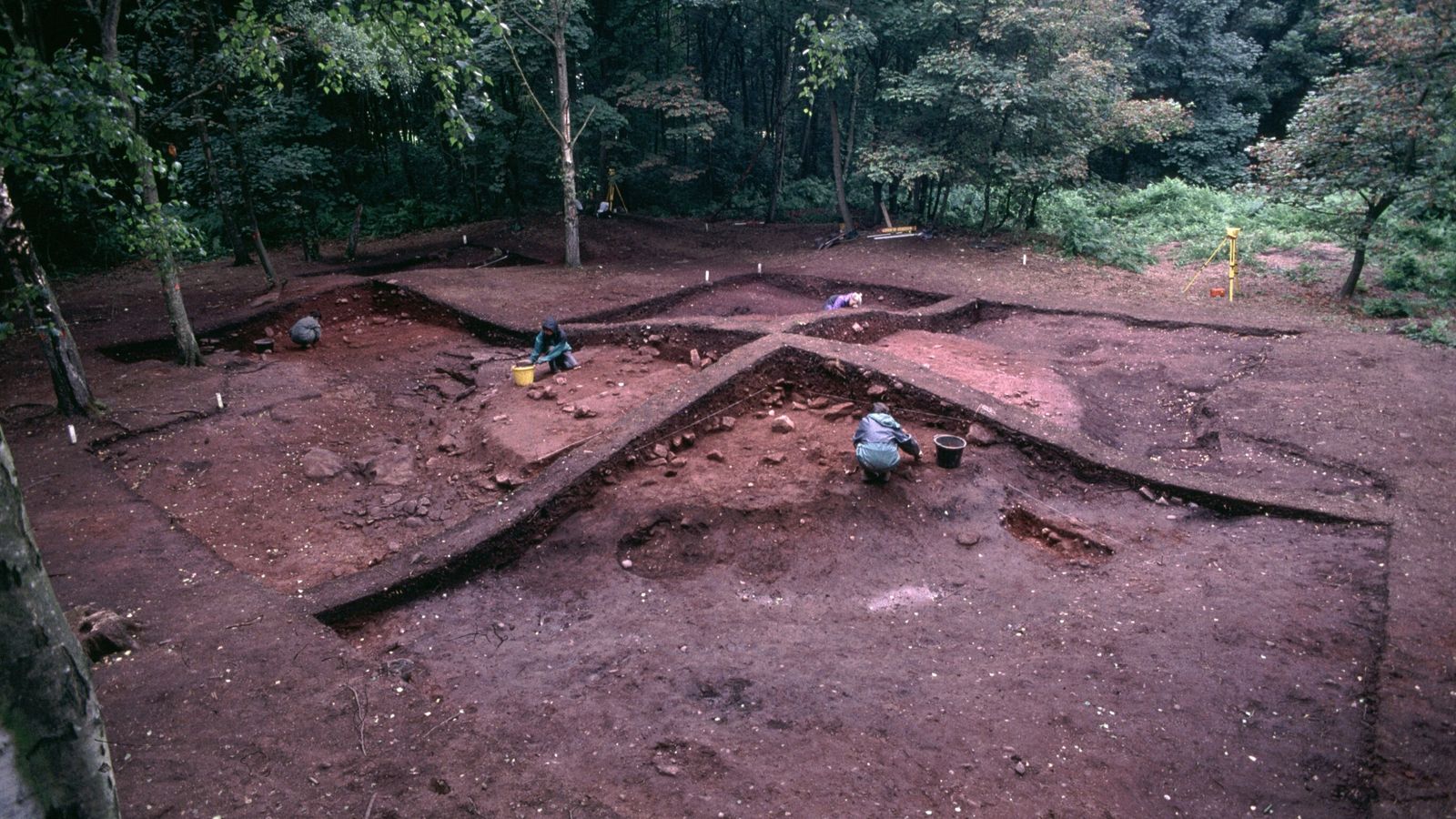Vikings brought dogs and horses over to the UK, new evidence has found.
Researchers from Durham University and Vrije Universiteit in Brussels made the discovery while looking at human and animal remains at the UK’s only-known Viking cemetery in Heath Wood, Derbyshire.
They found, in the context of their archaeology, that one human adult and a number of animals almost certainly arrived from the Baltic Shield area of Scandinavia, which covers Norway and parts of Sweden, but died soon after they got to the UK.
Scientists believe this indicates that Vikings were bringing animals over from Scandinavia, as well as stealing them upon their arrival.
The remains in question were found in the remnants of the same cremation pyre, leading scientists to believe the adult human from Scandinavia was perhaps someone important, and was able to bring across a horse and dog to the UK.
Tessi Loffelmann, a doctoral researcher from the two universities and the project’s lead author said: “This is the first solid scientific evidence that Scandinavians almost certainly crossed the North Sea with horses, dogs and possibly other animals as early as the ninth century AD and could deepen our knowledge of the Viking Great Army.
“Our most important primary source, the Anglo-Saxon Chronicle (a collection of annals in Old English, chronicling the history of the Anglo-Saxons), states that the Vikings were taking horses from the locals in East Anglia when they first arrived, but this was clearly not the whole story, and they most likely transported animals alongside people on ships.
Daniel Harris: British teenager whose videos were linked to two mass murders in US is jailed
Damien Bendall: Exposed – the missed chances to prevent ‘psychopathic’ criminal from killing four people
Killamarsh deaths: Review into how probation officers handled Damien Bendall’s case
“This also raises questions about the importance of specific animals to the Vikings.”
The team also looked at strontium rations in the remains of two adults, a child and three animals at the site – an element that occurs naturally in rocks, soil and water, before finding its way to plants.
When those plants are eaten, strontium replaces the calcium in teeth and bones, and acts as a geographical fingerprint due to the varying ratios in different parts of the world.
It was discovered that one of the adults and a child could have been from the local area around Heath Wood, southern or eastern England, or Europe – including Denmark and south-west Sweden, which are outside the Baltic Shield region.
However, the remains of the other adult and the three animals (a horse, dog and possibly a pig) had strontium rations often found in the Baltic Shield area.
Researchers suggest it could be that the pig fragment was a piece from a game, or possibly another talisman brought over from Scandinavia, rather than a live pig.
Research co-author Professor Janet Montgomery, in the Department of Archaeology, Durham University, said: “Our study suggests that there are people and animals with different mobility histories buried at Heath Wood, and that, if they belonged to the Viking Great Army, it was made up of people from different parts of Scandinavia or the British Isles.
“This is also the first published strontium analysis on early medieval cremated remains from Britain and shows the potential that this scientific method has to shed further light on this period in history.”
Archaeologists who excavated the cemetery between 1998 and 2000 from the University of York were also involved in the research, as was a team from the Universite Libre de Bruxelles.
Professor Julian Richards, of the Department of Archaeology, University of York, said: “The Bayeux Tapestry depicts Norman cavalry disembarking horses from their fleet before the Battle of Hastings, but this is the first scientific demonstration that Viking warriors were transporting horses to England 200 years earlier.
“It shows how much Viking leaders valued their personal horses and hounds that they brought them from Scandinavia, and that the animals were sacrificed to be buried with their owners.”
The findings are published in the PLOS One journal.






















